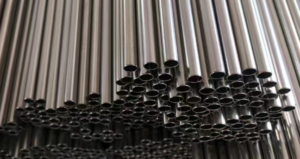Incoloy alloy, a nickel-chromium-iron alloy, finds extensive applications in industries such as aerospace, petrochemicals, food processing, and healthcare. Its widespread use stems not only from its superior corrosion resistance and high-temperature endurance but also from its remarkable processability. The excellent processability of Incoloy alloy is evident in thermal processing, cold working, cutting, and heat treatment. In this article, we will take a closer look at Incoloy alloy’s exceptional processability.

Incoloy Alloy’s Exceptional Processability:
Firstly, in thermal processing. Incoloy alloy undergoes various thermal treatments including hot compression, hot extrusion, and hot forging. By heating the alloy to an elevated temperature and then applying pressure to induce deformation, these processes facilitate the production of sheets, bars, wires, and intricately shaped components. Moreover, thermal processing significantly enhances the alloy’s density and mechanical properties, making it suitable for applications in high-temperature, high-pressure, and corrosive environments.
Secondly, cold working is another crucial processing method for Incoloy alloy. This encompasses cold rolling, cold drawing, cold forging, stamping, and cold extrusion. Since cold working involves plastic deformation below the alloy’s recrystallization temperature, it notably improves the alloy’s strength and ductility, thereby enhancing its durability and reliability. However, it is imperative to meticulously control the process parameters to prevent excessive cold working from increasing material brittleness and compromising corrosion resistance.
Furthermore, cutting processes play a pivotal role in shaping Incoloy alloy. By employing appropriate cutting techniques, Incoloy alloy can be tailored to meet the material properties and dimensional accuracy requirements of various industries. Nevertheless, given the alloy’s high hardness and wear resistance, cutting generates substantial heat. Consequently, carbide or ceramic cutting tools are essential to prevent deformation and maintain surface quality during the cutting process.
Additionally, heat treatment is an indispensable aspect of Incoloy alloy processing. Common heat treatment methods include annealing, solution treatment, and aging. These treatments not only adjust and enhance the alloy’s mechanical properties such as strength, hardness, and toughness but also strengthen grain boundaries, thereby prolonging its service life and stability in high-temperature environments.
Conclusion
In conclusion, Incoloy alloy’s exceptional processability is a key factor in its extensive utilization for fabricating complex structures. By judiciously selecting thermal processing, cold working, cutting, and heat treatment techniques, the quality and performance of Incoloy alloy can be ensured, thereby maximizing its performance advantages across various industrial applications.
Why Choose Huaxiao Alloy?
Thank you for reading our article and we hope it can help you to have a better understanding of the Incoloy alloy’s exceptional processability. If you are looking for suppliers and manufacturers of Incoloy alloy, we would advise you to visit Huaxiao Alloy.
As a leading supplier of Incoloy alloy, Huaxiao Alloy offers customers high-quality Incoloy 800/800H/800HT, Incoloy 825, and Incoloy 925/926(AL-6XN) at competitive prices.



